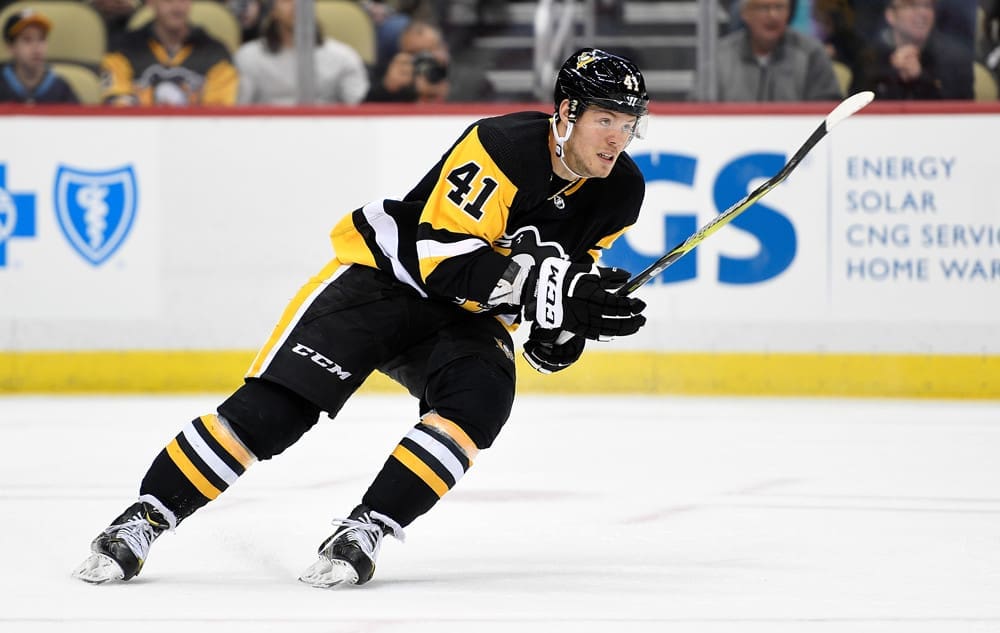Penguins
Is Trading Down to Get Extra Draft Picks Worth It?

There has been much speculation — outside the organization, anyway — about whether the Pittsburgh Penguins will trade their first-round choice in the upcoming NHL Draft to acquire an additional selection or two a bit later in the process.
Or, for that matter, whether they should do that.
Frankly, there are compelling reasons to support either approach.
In part because the Penguins have had just three first-round choices — Owen Pickering (2022), Sam Poulin (2019) and Kasperi Kapanen (2014) — in the past 10 drafts, their developmental pipeline is all but devoid of high-caliber prospects.
Pickering, a defenseman, has shown real promise, but doesn’t figure to have a significant impact in the NHL in the immediate future.
Poulin, who probably has the most potential of any forward in the system, seems like he’ll secure steady employment with the parent club at some point, although he’s given little indication that he’ll become a true difference-maker at this level.
Given that the earlier a player is chosen, the better the chances should be of him becoming an NHL contributor, that’s a pretty good reason to hold onto the 14th selection in the first round
That’s the theory, anyway.
Then again, there is a dearth of players on the Penguins’ organizational depth chart who are virtual locks to crack the NHL lineup anytime soon. If ever.
That’s why swapping the No. 1 for additional picks later in the draft would make sense; identifying teenagers who will develop into effective NHLers is far from a precise science, and the more choices a team has, the greater the chances should be that some will reach the league eventually.
For what it’s worth, Kyle Dubas, the Penguins’ president of hockey operations and interim GM, was not shy about trading down in the draft order during his run as GM in Toronto.
Of course, this will be the first draft he has overseen in his current role and the quality and quantity of legitimate NHL prospects available varies from year to year, so it wouldn’t be prudent to put undue emphasis on how the Penguins have fared in the past.
Still, it’s noteworthy that they have had a total of 17 second-round selections and 17 third-rounders over the past 20 years, and the players chosen later actually have been more productive as pros.
Eleven of the Nos. 2 made it to the NHL — one of them, Carl Sneep, played just one game at this level — while 12 of those selected in Round 3 have.
More importantly, the third-rounders have had much more staying power and greater impact than the others.
Two second-round forwards who no longer are with the Pittsburgh Penguins, Teddy Blueger (Vegas) and Daniel Sprong (Seattle), have appeared in 268 NHL games, tying for the most of any among the 17.
No fewer than eight of the 17 players the Penguins claimed in Round 3 over the past two decades have surpassed that total.
They are Alex Goligoski (1,042), Kris Letang (1,005), Robert Bortuzzo (533), Bryan Rust (505), Jake Guentzel (453), Daniel Carcillo (429), Oskar Sundqvist (355) and Matt Murray (272).
Of course, it doesn’t matter in 2023 how the Penguins drafted under Craig Patrick, Ray Shero, Jim Rutherford or Ron Hextall, or that Nos. 2 like Johannes Salmonsson and Keven Veilleux, among others, never lived up to the expectations of the people who selected them.
But the hit-and-miss nature of how the Pittsburgh Penguins’ second-round selections during the past 20 years have worked out might provide a cautionary tale for Dubas as he contemplates his options leading up to the draft.












